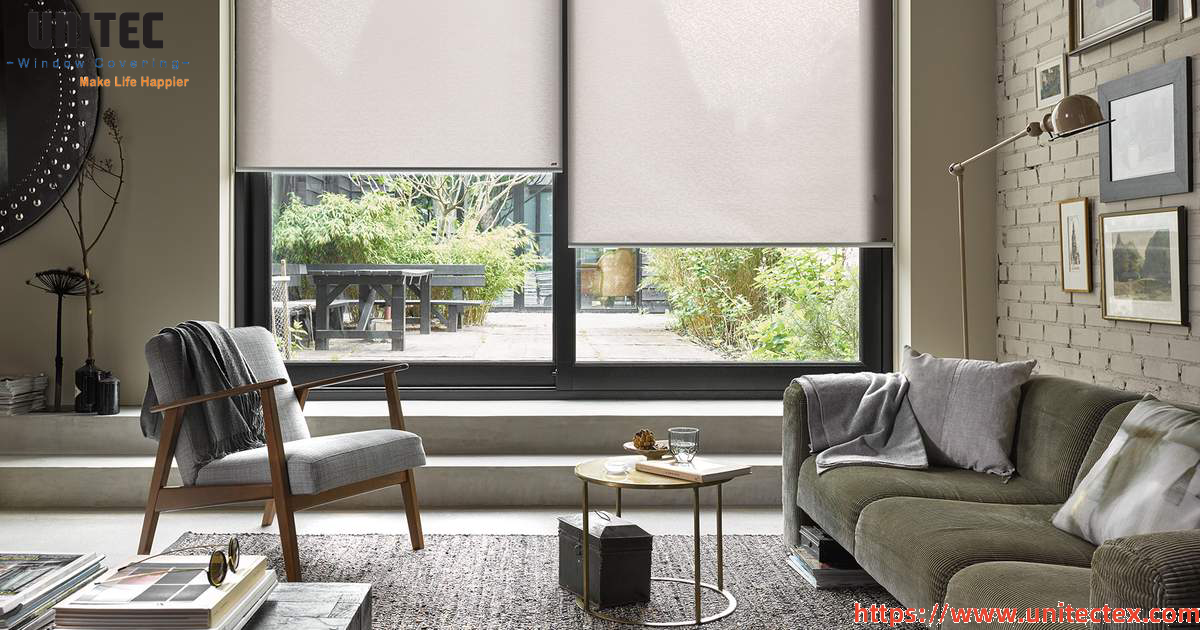What Are Sustainable Fabric Blinds?

Sustainable fabric blinds are roller blinds, roman blinds, or other window coverings made from eco-friendly materials and manufactured using environmentally responsible processes. These fabrics may include recycled polyester, organic cotton blends, bamboo fibers, or innovative textiles created from post-consumer waste such as plastic bottles. Unlike traditional synthetic materials that rely heavily on virgin resources, sustainable fabrics reduce energy consumption, lower greenhouse gas emissions, and minimize waste throughout their lifecycle.
Key Features of Sustainable Fabric Blinds
-
Eco-Friendly Materials
Sustainable blinds use fabrics certified by organizations like Oeko-Tex Standard 100, Global Recycled Standard (GRS), and ISO 14001. These certifications ensure the materials are free from harmful chemicals and meet strict environmental criteria. Recycled polyester, for instance, gives new life to plastic waste while maintaining the durability and functionality required for high-quality blinds. -
Energy Efficiency
Beyond the materials themselves, sustainable fabric blinds often incorporate thermal insulation properties. By blocking heat in the summer and retaining warmth in the winter, these blinds help reduce energy consumption for heating and cooling—an important consideration for eco-conscious homeowners and businesses aiming to lower their carbon footprint. -
Durability and Longevity
High-quality sustainable fabrics are designed to last. Fabrics with color fastness ratings of 5–6 (Blue Scale) resist fading even after prolonged exposure to sunlight. Longer product lifespans mean fewer replacements, reducing overall waste and saving costs in the long run.

Why Sustainable Blinds Matter for Google Trends and Consumer Demand
Google search data reveals a steady increase in queries like “eco-friendly blinds,” “sustainable roller blinds,” and “green home window treatments.” This trend reflects a growing consumer desire for products that combine aesthetics, performance, and sustainability. B2B buyers, including interior designers, architects, and commercial developers, are also seeking certified sustainable solutions to meet green building standards such as LEED or WELL.
As cities enforce stricter environmental regulations and homeowners aim for energy-efficient upgrades, sustainable blinds provide a competitive edge for retailers and suppliers. Businesses that highlight their eco-friendly certifications and use trending keywords in product descriptions, blogs, and marketing campaigns can attract more traffic and conversions from eco-conscious customers.
Design Versatility with Sustainable Fabrics
Sustainability no longer means compromising on style. Today’s sustainable fabric blinds are available in a wide range of textures, colors, and opacities, including blackout, light-filtering, and UV-protective options. Whether you’re designing a minimalist office, a cozy bedroom, or a contemporary living room, these blinds can complement any interior while delivering eco-friendly benefits.
Popular design trends on Google include “natural earth tones,” “soft neutrals,” and “textured weaves” that create a calming, organic aesthetic. Combining these looks with sustainable fabrics allows homeowners to achieve both beauty and environmental responsibility.
Benefits for B2B Buyers
For wholesalers, distributors, and commercial project managers, investing in sustainable fabric blinds offers several advantages:
-
Compliance with Green Standards: Ideal for projects aiming for LEED or BREEAM certifications.
-
Market Differentiation: Eco-friendly products appeal to a rapidly growing segment of environmentally conscious consumers.
-
Long-Term Savings: Energy-efficient blinds can reduce heating and cooling costs for commercial buildings.
-
Stronger Brand Reputation: Businesses that prioritize sustainability build trust with both clients and end-users.
Choosing the Right Sustainable Fabric Blinds
When selecting sustainable blinds, consider the following:
-
Certifications: Look for Oeko-Tex, GRS, ISO 14001, or similar certifications to ensure the fabric meets environmental standards.
-
Functionality: Decide whether you need blackout fabrics for bedrooms, light-filtering fabrics for living areas, or thermal fabrics for energy savings.
-
Cutting Methods: High-quality fabrics support multiple cutting options, such as ultrasonic or cold cutting, to maintain clean edges and enhance durability.
-
Warranty: Reputable suppliers offer warranties of 5 years or more, providing peace of mind for both residential and commercial applications.
For more information about curtains, please follow us and contact us
Post time: Sep-20-2025




